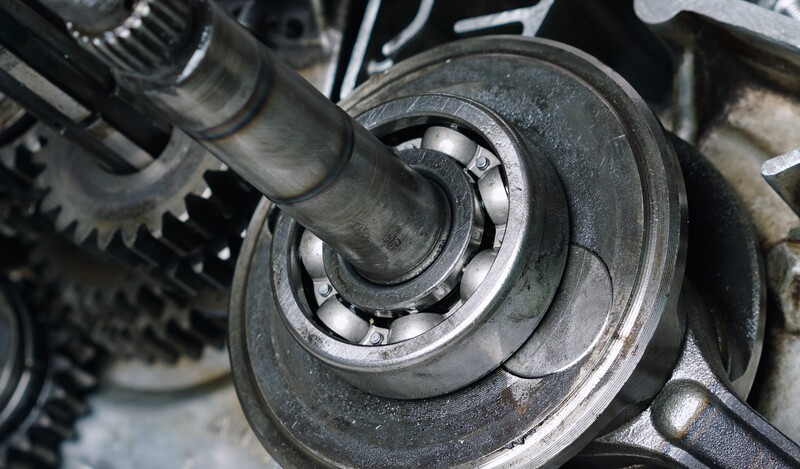Need Support?
Please provide your question. We’ll find you with the best support options.
Table of Contents
Thrust ball bearings are an essential component in various mechanical systems, designed to efficiently handle axial loads and ensure smooth rotational motion. These specialized bearings are engineered to withstand forceful thrusts generated when a load is applied parallel to the bearing's shaft. Unlike radial bearings, which primarily support radial loads perpendicular to the shaft, thrust ball bearings excel at sustaining axial loads, making them indispensable in applications ranging from automotive transmissions to industrial machinery.
Thrust ball bearings consist of several key components that work in harmony to facilitate axial load management.
As the name suggests, thrust ball bearings incorporate small spherical rolling elements (balls) that reduce friction during axial motion. These balls are positioned within a cage or retainer, maintaining proper spacing and alignment.
Thrust ball bearings possess two ring-like raceways, known as shaft washers and housing washers. The balls move smoothly between these raceways, enabling axial load transmission.
The cage securely holds the balls in position while allowing them to move freely.
When an axial force is applied to a thrust ball bearing, it exerts pressure on the balls. The balls, in turn, roll along the raceways, transmitting the force from one washer to the other. This mechanism enables the bearing to handle axial loads in a unidirectional or bidirectional manner, depending on the bearing's design.
There are two primary types of thrust ball bearings
These bearings can accommodate axial loads in one direction only. They consist of a single row of balls and are suitable for applications where the axial load is expected from a specific direction.
These bearings can withstand axial loads in both directions. They feature two rows of balls, allowing them to handle bidirectional thrust, making them ideal for applications where the direction of axial loads may vary.
Thrust ball bearings are designed to handle relatively high axial loads. Their load-carrying capacity is influenced by factors such as the number and size of balls, the angle of contact, and the material properties of the bearing components. However, it's crucial to ensure that the applied load does not exceed the bearing's rated capacity, as this can lead to premature wear and failure.
Two common types of thrust bearings are needle roller thrust bearings and ball thrust bearings. While both serve the same fundamental purpose, they have distinct designs and characteristics that make them suitable for specific applications. Let's delve into the differences between these two types of thrust bearings.
Needle roller thrust bearings, also known as axial needle bearings, are designed to accommodate high axial loads in a compact form factor. They feature thin cylindrical rollers with a high length-to-diameter ratio, resembling needles, hence the name "needle roller." These bearings have a relatively large surface area, allowing them to distribute the applied load evenly, minimizing friction and wear.
Ball thrust bearings, also known as axial ball bearings, utilize spherical rolling elements (balls) to handle axial loads. They are designed to accommodate higher speeds and lower to moderate axial loads compared to needle roller thrust bearings. Ball thrust bearings have two grooved washers with balls sandwiched in between, enabling smooth axial motion and load transmission.
| Key Differences | Needle Roller Thrust Bearings | Ball Thrust Bearings |
|---|---|---|
| Design | Use cylindrical rollers | Utilize spherical balls |
| Load Capacity | Handle higher axial loads in a compact design | More suitable for applications with moderate axial loads and higher rotational speeds |
| Friction and Speed | Higher friction; better suited for low-speed applications | Lower friction; better suited for higher-speed applications |
| Applications | Commonly found in applications with limited space and higher axial loads | Preferred for applications requiring precise axial load handling and lower friction at moderate speeds |
Thrust ball bearings find extensive use in various industries and applications

In automotive transmissions, steering systems, and clutch assemblies, where axial loads are present.

In heavy machinery, conveyor systems, and gearboxes, where thrust loads need to be managed effectively.

In aerospace engineering, thrust ball bearings are employed in flight control systems and landing gear assemblies.
Thrust ball bearings play a crucial role in efficiently handling axial loads, ensuring smooth rotational motion in various mechanical applications. Their ability to withstand forceful thrusts and transmit loads in specific or bidirectional directions makes them indispensable in modern engineering. With constant advancements in bearing technology, these precision components continue to enhance the performance and reliability of a wide range of mechanical systems.
If you have any questions or require further information about thrust ball bearings, please do not hesitate to contact our professional team. As a reputable bearing supplier based in Taiwan, we pride ourselves on offering high-quality products and exceptional customer service. Our experienced engineers and experts are well-versed in bearing technology and can provide you with expert advice tailored to your specific application needs.
 Extended reading:
Extended reading:
The Ball Bearing Size Chart|ISK BEARING
Needle Bearing Size Chart|Teach you how to choose bearings correctly
This is just the tip of the iceberg!
Discover more about the features and applications of various bearings.
Click here to explore more articles and find the perfect bearing for your project.
Needle Bearings (Roller Bearings) are a type of bearing that performs exceptionally well at high speeds. Their rollers are precisely guided by specially shaped, high-rigidity cages with minimal dimensional error. Despite their small cross-section, needle bearings...
How Do Ball Bearings Work? Bearings are often small and unassuming components in a product, yet they are crucial for its proper functioning. Without bearings, many products would fail to operate effectively. But do you know how ball bearings...
Please provide your question. We’ll find you with the best support options.